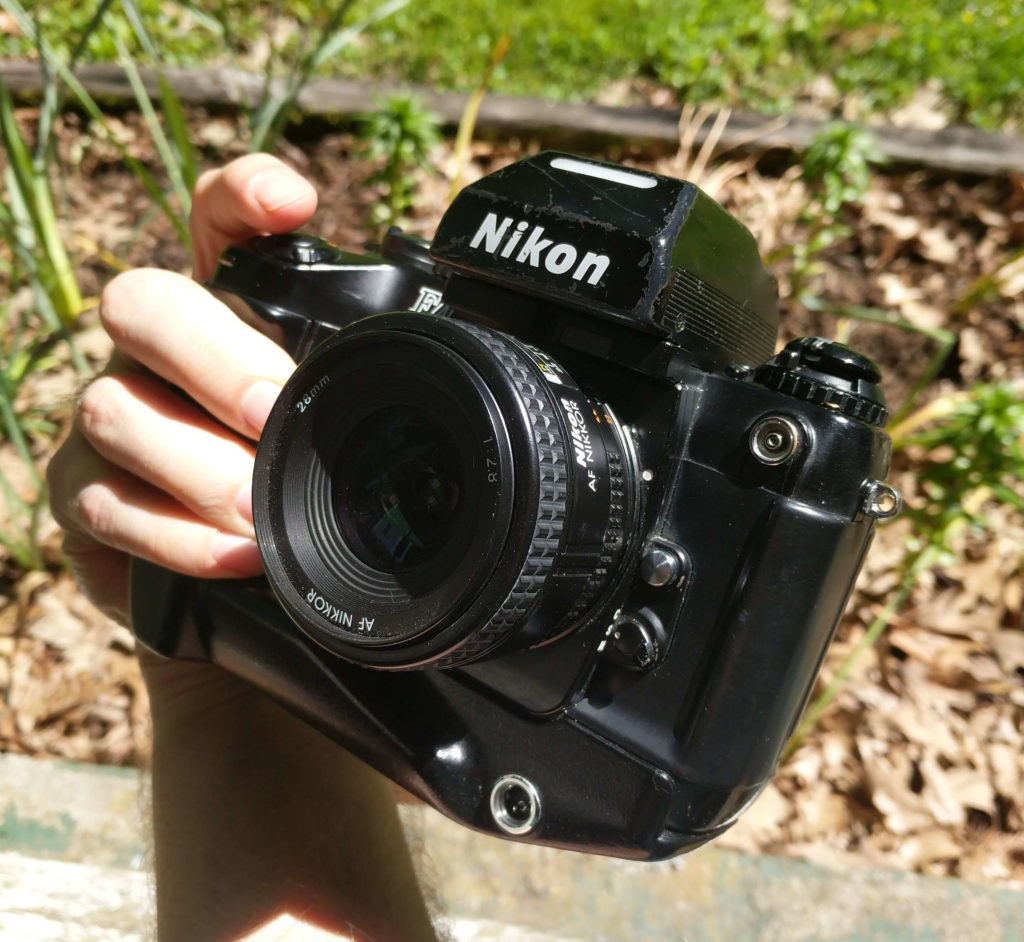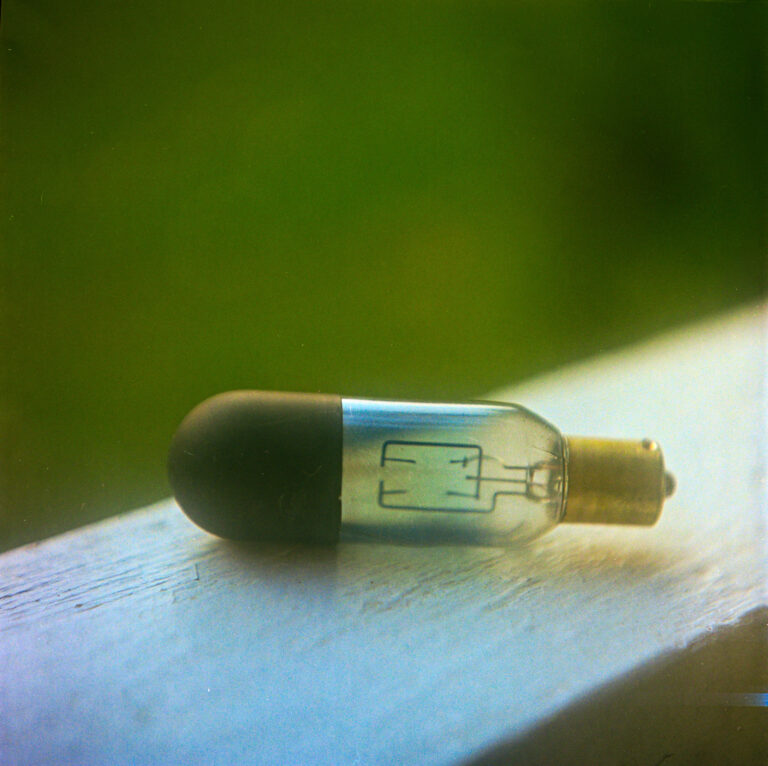As someone who shoots manual 60s and 70s cameras almost exclusively, getting used to the Nikon F4S has been a paradigm shift to say the least. The feeling must be similar to climbing out of a World War II piston aircraft and into something like an F-4 Phantom.
Using the F4 feels like wielding the F-4 Phantom of cameras. It’s a formidable, heavy beast loaded out with some of the best technology of its time. And even though its time was quite a while ago, it still feels advanced today.
My particular copy has been very well-loved, giving it a patina reminiscent of some kind of gritty Star Wars prop. Looking like it’s fresh from a Jawa sandcrawler only makes it cooler in my opinion, and the camera feels like it has a ton of life left. These were definitely built to last.
The User Experience

Picking up the camera, the first thing you’ll notice is its immense bulk. It may look similar to a more lightweight modern camera, but its construction is mostly metal. To say it’s heavy would be an understatement – it weighs over two and a half pounds before you load in the 6 AA batteries.
That said, it feels surprisingly comfortable to use. The grip is so ergonomic I could’ve sworn it was designed specifically for my hand. Its weight could also be considered an advantage for shooting with slow shutter speeds; a heavy camera is a stable camera, after all.

Trick Features
If you’re shooting with slow shutter speeds, there’s a special counterweight to cancel out the shock of the mirror flipping up. This would be a great camera for long exposures.
Like its predecessors, the F4 has a viewfinder and focusing screen that can both be swapped out to suit a more specific use case. The parts tend to be rare and expensive today though.

There’s also a complex matrix light metering system that I won’t pretend to understand, but reportedly it’s one of the best in the industry. Very nice for slide film aficionados.
If you’re into experimental photography, there’s a switch on the top of the camera that allows you to easily take double exposures, or even multiple exposures on the same frame using the continuous shooting mode.
Continuous shooting modes on a film camera? You bet! If you hate money, and you’ve decided that film photography is the most efficient way to get rid of it, the F4S can shoot 5.7 frames per second in continuous high. If you were so inclined, you could blast through a 36 exposure roll of Ektachrome in a little over 6 seconds.
Shooting With The F4
To turn on the camera, you push the safety and select either semi-auto or full auto.
You think I’m kidding, but the F4 literally has a mechanical interlock you have to push before arming the camera. Intimidating, to say the least.
But this is not an intimidating camera to shoot.
There’s a lot of functions and dials to learn, but once you figure it out it shoots just like a modern DSLR. With aperture, shutter priority, and even a fully automatic program mode, the camera does most of the work for you. You can compose and shoot in seconds.
The finder is very large and very bright, and has a heads-up display that shows important tactical information like the shutter speed, the aperture setting, a focusing aid, and (in manual mode) a light meter.
Autofocus
The F4’s targeting computer – er, I mean autofocus – is quite impressive for its time. In general I would say it’s quite accurate and quite fast, in good lighting. It can usually achieve target lock in under a second, but it struggles in subdued lighting, or with more confusing subjects and/or busy backgrounds. Currently I only own two AF lenses, a 35mm and a 70-300mm. So my experience is limited.
Manual focus is always an option, but if the autofocus is at a loss, the electronic focus aid will probably be even more so. All in all, I’d consider the autofocus passable for its time, though it is a weak point for this camera.
The F-Mount Lens System
If you’ve been in photography circles for a while, you’ve no doubt heard about the legendary Nikon F-mount lens system. Somehow, Nikon has managed to keep the same mount alive since 1959 till the present day in 2024. Compatibility varies, with some older lenses being more difficult to shoot due to lack of aperture info, and newer lenses lacking aperture rings entirely (which requires you to shoot in shutter priority or program).

By any token though, the wealth of lenses available for this camera is truly staggering. I’ve been able to use a modern DSLR kit lens on my F4 (its autofocus even worked!), and a fast 50 from the 1960s, albeit without aperture control. The main requirement for lenses is that they be compatible with Nikon’s AI metering system (the old “rabbit ear” lenses don’t work so well) and have a manual aperture ring.

The Bottom Line
All in all, this camera is a beast. It’s super fast to shoot, great to use, and gets you into an amazing lens system. If affordably-priced ex- professional equipment hooks you as much as it does me, you’ll probably love this camera.
Though I don’t have personal experience with them, I’m told you can’t really go wrong with anything from the Nikon F line. The F5, for example, is an incremental improvement on the F4, and better in a lot of ways. Personally, for me the F4 is where it’s at. It’s an advanced camera, but it still has that appealing chunky 80s-ness and character.
Its massive size and sometimes temperamental complexity make it hard to recommend this machine as your only camera. But to round out a squadron, I think every film photographer should consider finding a place in their hangar for one of these.







Leave a Reply